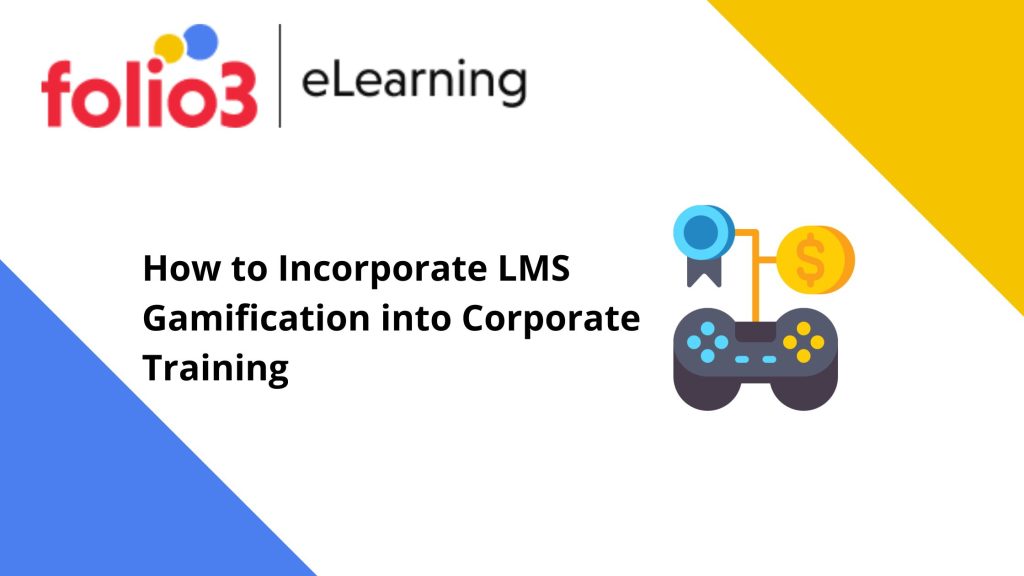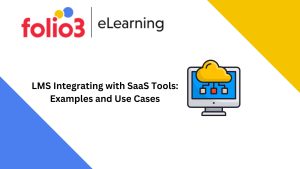
Executive Summary:
LMS gamification popularity hit an all-time high as more and more businesses started incorporating gamification elements into corporate training to maximize engagement and productivity.
The past few years have seen workplace dynamics change like never before. The use of technology in corporate training is quickly becoming a need rather than a want as more and more people are looking for ways to improve and enhance custom LMS development and design. Today’s working generation has grown up in the internet, gaming, and social media world. Ever since the pandemic, they have become more comfortable with the convenience of technology and working from home. Moreover, research suggests that more than 90% of employees claim that gamification improves productivity. LMS Gamification makes it easier to get through to this generation and trains them in a way that they learn more and retain what they know.
But before we learn about the elements and features that make up gamification and how we can incorporate it into corporate training, let us first discuss what it is.

What is LMS Gamification?
To understand what LMS gamification is, let us first try to understand what gamification is. Simply put, gamification uses game-like incentives and gaming elements to make it more engaging. For LMS and eLearning solutions, it means incorporating different gaming and game-design elements such as rewards, trophies, and leaderboards into your LMS to maximize user engagement, learning, productivity, and knowledge retention! Gamification also helps employees understand and take in digital content. It brings a sense of fun and competition to the table, which makes employees keener to participate and “win”! It also gets them recognition when they do well in a particular course, so even that helps in increasing motivation for the employees.
Theoretically, gamification is defined in dictionaries as applying certain gaming elements and principles to non-gaming contexts to improve engagement and learning flow. You can incorporate gamification into your e-learning solution by introducing various game-like elements into it. But before we dive into how different organizations can leverage gamification and make good use of it in custom LMS development, let us first discuss the different gamification elements and how we can incorporate them.
LMS Gamification Elements: How to Incorporate Gamification into Custom LMS Development
Gamification has several elements and features that can be easily incorporated into custom LMS development to create the perfect LMS that actually improves productivity and ROI. Moreover, since new research is constantly coming in and technology is continuously evolving, this list will keep growing as gamification evolves and new features are developed.
Points
Points are numerical values denoting a measure of success for the employees, and they can be earned by successfully completing tasks or even by participating in certain training activities. Points can be used in lots of ways. For instance, once the employees have collected a pre-decided number of points, they can unlock new “levels” or even trade them in for rewards and trophies.
Rewards: Badges & Certificates
The most important thing about LMS gamification elements is that they offer recognition to the employees. This is why rewards like badges and certificates are important because they give the employees a sense of achievement when they receive a reward. They can even help the employees and the management track progress on an individual basis. Certificates can be even more important for certain training courses, such as those about safety and quality assurance. This way, they can be renewed whenever policies and regulations are updated and help in compliance management.
Rewards: Virtual Raffle Coupons
The employees can earn these during the course of the corporate training, and then the virtual coupons can be part of a raffle draw at the end of the course when employees can win awards and prizes. Some say that employees would be “in it to win it” and not really learning for the sake of learning, but at the end of the day, if the knowledge gets through, and is retained, such draws and the resulting rewards don’t do any harm.
Rewards: Collectibles
Collectibles can be more rewarding for certain people and less for some. But it is definitely something that can be used in LMS solutions, and employees can earn collectibles when they complete certain tasks. Collectibles can encourage communication between resources and strengthen the bond between employees if they are allowed to trade them within the organization. This also helps make the training sessions more interactive.
Special Level Unlocking Keys
Very common in mobile games nowadays, these keys are earned by completing certain modules in a certain time frame or even after earning certain badges. The keys can be used to unlock new levels, give bonus points, and even grant special access to extra training resources.
Leaderboards
One of the most popular gamification elements, leaderboards are a must-have if you want to gamify your LMS solution. Known for encouraging healthy competition between employees and peers, leaderboards offer recognition as a form of motivation to employees, encouraging them to do better than their coworkers to get their name on the board.
Virtual Currency
No, we are not talking about Monopoly money, but you could say it is similar. Virtual LMS-specific currency money can be used in place of points for many courses since money has always been a motivating factor. Learners can earn money to achieve milestones and complete tasks and may even be allowed to purchase tangible rewards.
Simulation
Gamification can be used to help organizations conduct CPR training. CPR is no longer confined to healthcare organizations because so many other professions now have mandatory CPR training, such as childcare providers, lifeguards, flight attendants, coaches, teachers, firemen, and policemen. A simulator can be used to demonstrate and teach live CPR so that the learners can know exactly how it is done without harming anyone.
Likewise, simulation can be used to teach so many things, such as complicated surgery that should be done within a certain timeframe, fire rescue techniques, aircraft flying, and even working with hazardous materials and dangerous machinery in factories. Simulation offers a safe space and helps employees learn by practicing skills and doing things themselves without hurting themselves or others as opposed to simply reading about them or watching a demonstration.
Competition
Gamification is all about competition, and any sort of competition encourages employees to do better than one another. For an LMS, the competition can come in the learning stage or even when the employees apply what they have learned.
In the learning stage, this can mean awarding points for every stage the employees successfully complete or task they accomplish. This helps them learn faster since they are competing with each other, and since they are only awarded points when the tasks are completed successfully, it also ensures that proper learning takes place.
Competition can still be a fun, motivating factor in the application stage. It can help evaluate how well the employees absorb the LMS course content and whether they can retain and apply what they are learning. Competition can also be used for assessments and tests to motivate employees to do better. Competitions are known to show a quick improvement in productivity and sales.
Game-based Digital Content
Game-based content can totally change the UI and UX of your e-learning solution. It tends to make the course content far more interesting and engaging for the employees because it’s less of a chore and more fun when your turn a lecture into a game. Game-based content can mean interactive video modules, custom quizzes, a treasure roadmap so that employees can be on their way to the top by finishing courses and tasks, mixed media assessments, virtual exams, and even personalized games.
Scenario-based learning can be used to train for specific problem-solving skills and strategy building. You can incorporate strategic and challenge-based games, problem-solving games, and even augmented reality puzzles depending on the need and task.
Is LMS Gamification Necessary?
However beneficial it may have, gamification is not essential to custom LMS development. It can also cost quite a bit, especially if you decide to incorporate simulation and augmented reality. Having said that, the benefits of gamification and the fact that it improves ROI outweigh any costs that are incurred. The resulting increase in productivity, as well as revenue, also shows that incorporating gamification elements ensures the success of an LMS.

FAQS
Gamification has several benefits, especially when incorporated into the learning context. The benefits include making the learning experience fun and interactive, which motivates employees to learn more because they find it exciting. It helps build an addiction to knowledge and also improves knowledge retention. Moreover, it helps employees learn from real-world situations, encourages healthy competition, and improves communication and employee bonding. It also provides feedback in real-time, and the employees can benefit by knowing how they performed right away in a particular assessment or test. Lastly, and most importantly, it helps improve sales and revenue, making it a valuable investment.
You can use gamification to engage employees in several ways:
You can reward favorable performance in task completion with points.
You can also use badges to encourage employees to complete tasks.
You can turn tasks into gaming levels to create excitement for your employees.
You can encourage healthy competition by introducing leaderboards and even offering an award to whoever tops the board.
You can offer collectibles as prizes and let the employees use a chat forum on the LMS to trade them, which also improves communication and bonding.
You can offer the employees interactive maps to track and monitor their progress and strive to improve.









